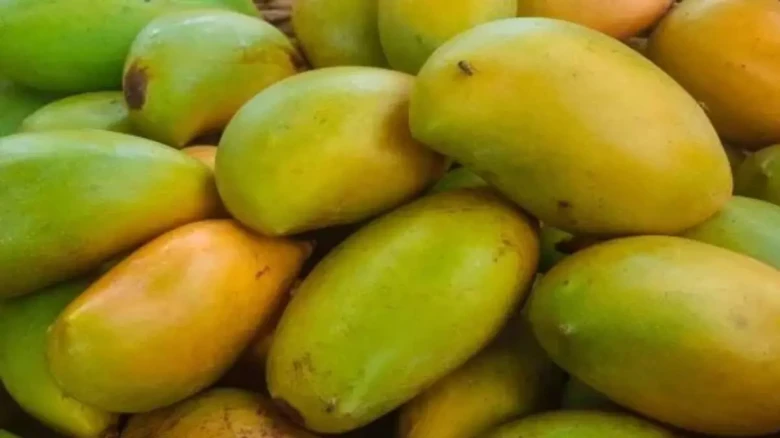Nakagawa selects ripe mangoes that are going to be packaged and shipped in Otofuke on the Japanese island of Hokkaido.
Digital Desk: Everyone loves mangos, and summertime is when they are most in demand. On the other hand, since 2011, a guy in Japan has been growing mangoes in the chilly Tokachi region of the nation's northernmost island. Since each of these mangoes may cost up to $230 (Rs 18,892.78), these are the most costly in the world.
Nakagawa selects ripe mangoes that are going to be packaged and shipped in Otofuke on the Japanese island of Hokkaido. The greenhouse's thermometer monitor shows a temperature of about 36C even though the outside temperature is a frigid -8C in December. He had no idea that an effort to farm sustainably might one day result in the most costly mangoes in the entire world. Nakagawa, the 62-year-old former petroleum firm CEO, held the position.
Nakagawa switched to mango farming after spending years working in the oil sector, where rising prices convinced him that there was a need to move beyond fossil fuels. With the assistance of another mango producer from the southern Miyazaki region, who insisted that it was possible to cultivate the juicy fruit in the winter months, Nakagawa started his farm and established Noraworks Japan. He registered his mango brand as Hakugin no Taiyo, which translates to "Sun in the Snow," after a few years, according to Bloomberg.
He's growing mangoes in the winter, but how?
The key to Nakagawa's success is using snow and hot springs, two valuable natural resources in his native Hokkaido. He gathers winter snow and uses it to cool his conservatories in the summer, tricking the fruits into delaying blossoming. In the winter, natural hot springs heat the greenhouse, enabling him to collect roughly 5,000 mangoes during the off-season.
By allowing mangoes to grow during the cooler seasons when fewer insects are active, the technique does away with the need for insecticides. Hokkaido's low humidity also reduces the need for products to remove mould. Furthermore, harvesting in the winter allows farmers to acquire manpower more easily at a time when Japan is struggling with a workforce crisis, particularly in rural areas where farmers have less work to perform.
The flavour is already superior to ordinary mangoes, which have a higher sugar content of about 15 degrees brix, according to Nakagawa, and the green approach just enhances it. Additionally, his fruit is free of stringiness and has a buttery feel.
Due to the freshness of their production, they have attracted the interest of both consumers and retailers. One of his mangoes was shown in 2014 at the Isetan department store in Tokyo, where it was sold for roughly $400.
What is Hiroyuki Nakagawa's future plan?
Nakagawa is not satisfied yet. He intends to use the same method to cultivate additional tropical foods in order to make Tokachi a fruit production hub in the winter and boost the local economy. Then he concentrates on peaches, another delectable fruit that thrives in hotter climates.

Leave A Comment